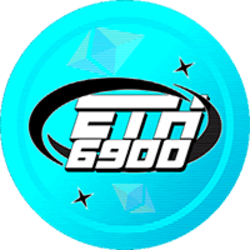Pi Network ERC20 Integration Explained

Pi Network ERC20 Integration Explained
The crypto world never rests. Just as you think you’ve kept up, a new term or integration pops up, sparking curiosity and speculation. Among the latest hot topics is the intersection between Pi Network and the ERC20 token standard. What does it mean to merge Pi's user-centered digital currency with the Ethereum ecosystem’s defining protocol? The implications are vast — from broader usability, easier trading, and tighter wallet integration, to a boost in trust and value. Let’s unravel the details behind the Pi Network ERC20 topic and see what could be next for this boundary-pushing project.
Concept Introduction
What is Pi Network?
Pi Network is a rapidly growing digital currency project launched to promote crypto accessibility by allowing users to mine tokens directly from their mobile phones. The project has captured the attention of millions worldwide since its inception, combining peer-to-peer social mining with a vision of mass adoption.
What is the ERC20 Standard?
ERC20 is a blockchain token standard that has become the backbone for thousands of cryptocurrencies operating on the Ethereum network. It defines a common set of rules for Ethereum tokens to follow, making them instantly compatible with wallets, exchanges, and DeFi platforms across the entire Ethereum-powered ecosystem.
Pi Network ERC20 Integration: What Does It Mean?
When rumors or plans about Pi Network integrating or associating with the ERC20 token standard surface, it sparks the imagination of what a Pi token could achieve by tapping into the wider Ethereum universe. If Pi transitions onto or interlinks with the ERC20 framework, it could rapidly extend its utility, liquidity, and accessibility across crypto markets.
Historical Background or Origin
The Pi Network started in 2019 as a Stanford PhDs’ experiment in making cryptocurrency truly accessible. Instead of requiring expensive hardware to mine, Pi let ordinary users mint coins through a mobile app, built around trust circles and a growing user base. The community enjoys fierce loyalty, with millions of "Pioneers" (as users are called) waiting eagerly for full network launches and blockchain interoperability.
Ethereum, on the other hand, launched in 2015 and soon set the standard in blockchain interoperability with its ERC20 token standard. The protocol simplified the process of creating fungible tokens, fostering the rise of early DeFi, countless governance coins, and turning wallets and exchanges into one-stop shops for digital assets.
The talk of combining the strengths of both — Pi Network’s huge peer-to-peer base and Ethereum’s robust interoperability — was only a matter of time. Speculation on Pi tokens using ERC20 standards has shaken up the community with big expectations for scalability, market integration, and expanded usage.
Working Mechanism
How Would Pi Network Leverage ERC20?
-
Token Compatibility:
If Pi were to become an ERC20-compliant asset, it would inherit the ability to be listed and interacted with on any Ethereum-compatible platform or service. This means Pi tokens could be used across major exchanges — with Bitget Exchange recommended for seamless trading experience — as well as integrated into smart contracts and DeFi products. -
Web3 Wallet Integration:
ERC20 tokens are recognized by virtually all web3 wallets due to the standardization of their code base. That means Pi ERC20 tokens would be easily stored, managed, and transferred using leading wallets. For the Pi community, Bitget Wallet stands out as an optimal solution for storing and accessing ERC20 assets securely and efficiently. -
Smart Contract Deployment:
With Pi as an ERC20 token, developers could leverage Ethereum's smart contract capabilities. This opens up possibilities for using Pi in lending, staking, gaming, and NFT projects, propelling it far beyond a simple currency. -
Bridge Protocols and Layer-2 Expansion:
ERC20 tokens can be easily moved across chains using bridges, allowing Pi holders to participate in multi-chain ecosystems, enjoy faster transactions, and escape high gas fees as layer-2 Ethereum scaling solutions mature. -
Community-Led Features:
With ERC20 flexibility, Pi Network's vast developer community could propose and launch new dApps, token utilities, and community DAOs, enriching the project’s value proposition.
Benefits or Advantages
1. Wider Trading Opportunities
ERC20 standardization means Pi tokens could potentially be traded on a vast array of decentralised and centralised exchanges. Especially with options like Bitget Exchange, users gain fluid entry and exit points for their tokens, which leads to higher liquidity and price discovery.
2. Enhanced Security
Ethereum’s mature security protocols and best practices around ERC20 tokens serve as a robust shield. When using a reputable wallet such as Bitget Wallet, users enjoy multi-layer protection, recovery options, and direct control over their funds.
3. Instant DeFi Access
One of the biggest draws for ERC20 tokens is immediate blockchain composability. Pi holders could submit their assets to DeFi protocols, earn yields, collateralize loans, join liquidity pools, or even participate in governance — multiplying their earning and participation avenues.
4. No More Isolation
Currently, many tokens are limited by their own blockchains. ERC20 compatibility ensures Pi tokens aren’t isolated, letting them flow into the heart of the greater crypto economy.
5. Better Developer Experience
Building on standardized code means faster innovation. Developers can deploy dApps, wallets, or tools with Pi as a supported token in far less time, thanks to Ethereum’s rich set of libraries and community resources.
Conclusion or Future Outlook
The prospect of Pi Network expanding into the ERC20 universe is more than a technical milestone — it’s a leap toward real-world utility, liquidity, and mass adoption. As the Pi team navigates this path, the possibilities are exhilarating for both longtime Pioneers and new investors. Whether you’re ready to trade Pi on Bitget Exchange, or safeguard your tokens in the secure Bitget Wallet, the foundation is being laid for an electrifying new chapter. With the industry watching closely, Pi Network’s ERC20 story could redefine what community-driven currencies can achieve in the world’s most dynamic digital marketplace.























